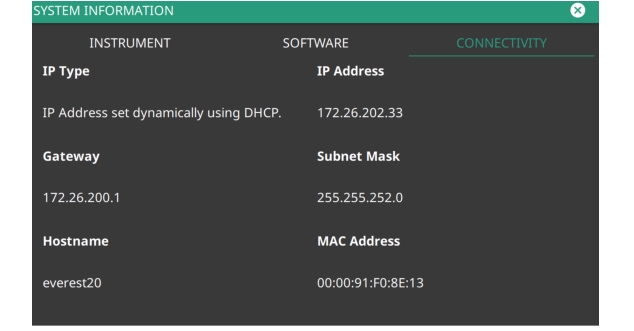 |
IP Type There are two primary types of IP address formats used today, IPv4 and IPv6 Gateway A TCP/IP network can have a gateway to communicate beyond the LAN identified by the network ID. A gateway is a computer or electronic device that is connected to two different networks and can move TCP/IP data from one network to the other. A single LAN that is not connected to another LAN requires a default gateway setting of 0.0.0.0. If you have a gateway, then the default gateway would be set to the appropriate value of your gateway. Hostname A Hostname is a label assigned to a device (a host) on a network. It distinguishes one device from another on a specific network or over the Internet. IP Address Every computer and electronic device in a TCP/IP network requires an IP address. An IPv4 address has four numbers (each between 0 and 255) separated by periods. For example: 128.111.122.42 is a valid IP address. Subnet Mask The subnet mask distinguishes the portion of the IP address that is the network ID from the portion that is the station ID. The subnet mask 255.255.0.0, when applied to the IP address given above, would identify the network ID as 128.111 and the station ID as 122.42. All stations in the same local area network should have the same network ID, but different station IDs. MAC Address An Ethernet address, or Media Access Control (MAC) address, is a unique 48-bit value that identifies a network interface card to the rest of the network. Every network card has a unique Ethernet address permanently stored in its memory. |